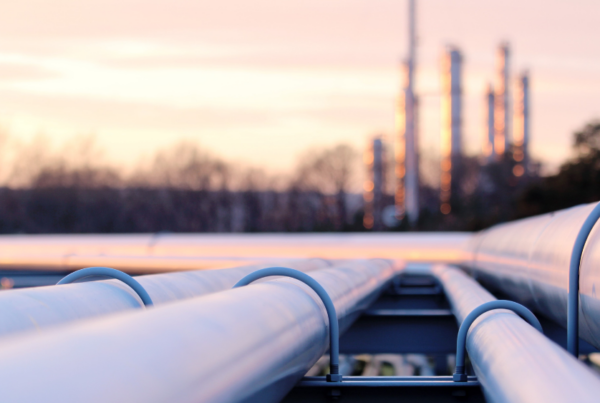
As Europe looks to hydrogen to decarbonise, Aurora Energy Research asks will hydrogen be produced locally or come from abroad?
- As Europe works towards Net Zero by 2050, hydrogen is likely to be used extensively in sectors such as industry, heating, and heavy transport. Aurora Energy Research estimates that hydrogen demand in Europe could increase 8-fold between now and 2050, creating an industry worth up to €125 billion per annum
- Aurora’s hydrogen market research team has analysed whether it will be cheaper for Europe to produce hydrogen domestically or import it from abroad
- Findings show that by 2030, imported hydrogen will be cheaper than domestically-produced green hydrogen, even after considering the cost of transport
- For a hydrogen consumer in Northwest Europe, the cheapest source of low-carbon hydrogen in 2030 will be blue hydrogen produced in the Netherlands or Norway, followed by green hydrogen imports from Morocco
With Europe looking to low-carbon hydrogen as a way of reaching Net Zero targets, what will be the cheapest source of hydrogen to meet growing demand? Hydrogen imports provide a solution for countries which have ambitious targets for hydrogen usage but may not have the potential to meet all this demand locally.
The European Commission’s hydrogen strategy sets out a vision for widespread hydrogen use to meet Net Zero targets, and many Member States have also defined their own national hydrogen strategies. Germany is currently leading the race for hydrogen in Europe, having a more developed policy, strong demand outlook and having invested more significantly in renewable electricity generation over the last few years.
Nowadays, hydrogen is used extensively in industry – but this is hydrogen derived from fossil fuels such as gas and coal. In order to hit Net Zero targets, countries such as Germany will need to not only switch major industries from gas use towards hydrogen, but also source this hydrogen from low carbon sources – such as ‘green’ hydrogen from renewables or ‘blue’ hydrogen from gas (with carbon capture and storage). However, even for a country as sizeable as Germany, it would be challenging to meet all future hydrogen demand domestically from renewables – hence a natural question is whether imports could also provide a cost-effective option.
Energy market analysts from Oxford-headquartered Aurora Energy Research have modelled the opportunities for European countries to import hydrogen. Analysts compared the delivered cost of hydrogen from four countries in the EU and six globally, to an example consumer in the north of Germany. The global countries analysed are Australia, Chile, Morocco, Norway, Russia, and the UK. The EU countries covered are Germany, France, the Netherlands, and Spain.
Considering just the production costs, analysts found green hydrogen produced in Morocco from solar co-located with electrolysers has the lowest costs in 2030, beating blue hydrogen produced in Norway, Russia, or the Netherlands, as well as any green hydrogen produced in Europe.
Next, analysts considered the cost of transforming the produced hydrogen into any one of five ‘energy vectors’ (forms into which hydrogen must be converted ahead of transportation), as well as considering the re-conversion cost following transportation. These vectors were compressed hydrogen, liquefied hydrogen, ammonia, methanol, and dibenzyl toluene (DBT). Lastly, analysts added in the transport costs, considering options such as trucking, sea freight and pipelines.
After factoring in all the above, Aurora found that blue hydrogen produced in the Netherlands wins out as the cheapest source of low-carbon hydrogen available to consumers in the north of Germany, by 2030. This is closely followed by blue hydrogen from Norway transported as compressed hydrogen by pipeline, then by green hydrogen from Morocco transported by ship as ammonia. Green hydrogen produced in Germany is towards the bottom of the list, in seventh place.
The implication of this analysis is that whilst countries in Europe look to develop a future hydrogen economy, as part of their decarbonisation plans, they should consider imports alongside locally produced hydrogen. Turning this opportunity around, there is huge potential for countries to export low carbon hydrogen into Continental Europe in the future – with both Scotland and Canada setting out strategies to do exactly that in recent weeks.
Anise Ganbold, Head of Global Commodities at Aurora Energy Research said:
Over the last 12 months, we have seen hydrogen rise to prominence in the energy industry as policymakers and utilities explore its role in meeting Net Zero carbon targets. Countries outside of Europe such as Chile, Morocco, Canada, and Russia are planning to produce hydrogen to export to Europe within the next decade. By looking at the costs involved in producing this hydrogen, and bringing it to Europe, we found that imported hydrogen could be cost-competitive with hydrogen produced in Europe, despite the conversion and transportation costs involved. This impacts how European countries should plan to develop their hydrogen economies.
– ENDS –
MEDIA CONTACT
Caroline Oates, Marketing and Media Associate
Email: caroline.oates@auroraer.com | Mobile: +44 (0)7912 568570
NOTES TO EDITORS
Founded by University of Oxford professors and economists who saw the need for a deeper focus on quality analysis, Aurora Energy Research has grown to become the largest dedicated power analytics provider in Europe. We provide our clients with data-driven intelligence for strategy, portfolio management and investment decisions on the global energy transformation.






